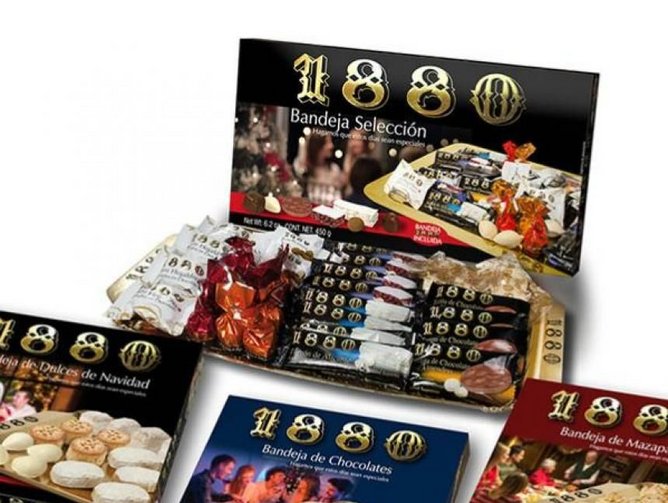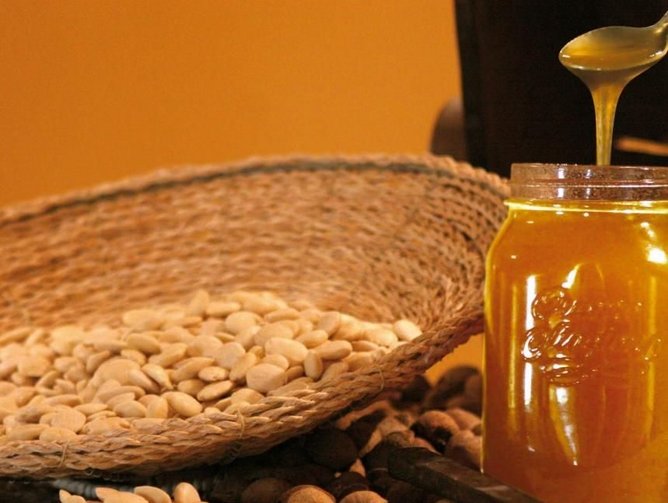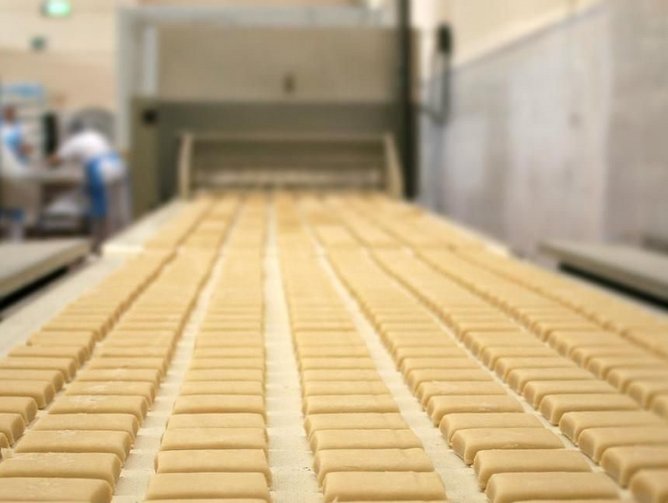With almost 300 years of history producing sweets and chocolates, Confectionary Holding is one of Spain’s oldest companies. It has two manufacturing bases – one in Jijona (Alicante) and one in Alcaudete (Jaen) – as well as facilities in Chile and Morocco where it sources raw materials such as almonds. There are seven distinct brands within the group, producing a range that includes nougats, chocolates, truffles and marzipans.
Andrés Cortijos, the General Manager, describes the markets it operates in: “Spain is our biggest market with around 65 to 68% of our sales, and then our biggest foreign markets South America, thanks to the similarities between our cultures, the southern states of the U.S and France, thanks to the geographical proximity.”
As well as its presence in these markets Confectionary Holding has also launched an online shop in the last few years, with over 35% of the sales in its first year of operation coming from international customers. The fact that 70% of purchasers order a mix of brands from the website is a particular highlight for the company which also reports that classic nougats and Christmas gift packs were the most popular products.
Confectionary Holdings has been looking at promoting its presence in Eastern Europe, too, as well as exploring the opportunities in Africa. And recently the group has started working with China, where local knowledge is key. Cortijos explains: “To make progress within the Chinese market, we have been working closely with our distributors to provide the right product portfolio for the customers. For example, having the wrong colour packaging could have meant that a product failed in China, so we have been able to make small adaptations using feedback from our distributors to improve our sales.”
All of this activity illustrates the group’s global vision – and the importance of its supply chain. “Being agile as a company and in our supply chain is one of the pillars of our overall strategy,” says Cortijos, who also highlights that agility is particularly important thanks to its customers’ seasonal buying behaviour. “We have a very short period of time in the lead up to Christmas when we do the majority of our sales, so that agility within the supply chain is crucial to us.” Being able to change the levels of production in the workshops and adjusting the resources to the production demands as required is a balancing act, which Confectionary Holding is achieving by constantly working on improving its supply chain.
And achieving this would not be possible without effective working with people. Cortijos says: “We have put a lot of effort into working with the middle managers who are in charge of different products, geographical areas and key accounts. Working with these managers has been very important as they get the feedback that we need on how our business plan is working. Then we can adapt our processes and adjust our strategy as necessary. We have trained this particular level of our staff so that our strategy can be implemented the most effectively.” Again, this illustrates how flexible Confectionary Holding can be and how much it responds to the needs and demands of its customers. “We need to be able to adjust our strategy periodically depending on the feedback we receive – our middle management are completely in touch with the reality of our business, so they enable us to do this very successfully.”
In fact, Cortijos believes that part of this success is because it operates with different supply chains for each market and each client. “It can be complex, but we need to offer a segmented response,” he adds.
Another significant ingredient in Confectionary Holding’s recipe for success is its approach to innovation. Cortijos explains: “We have developed a process that involves assessing our innovation techniques and the parameters we use to judge it. This is to avoid wasting resources on innovation projects that won’t go anywhere – because less than 10% of innovation actually makes it to the supermarket shelves so we have to make sure we get a return on our innovation investment.”
So new products are chosen very wisely and as a result of studying the feedback from the group’s existing customers. One example is that one of the premium brands, the 1880 range, is now available in single servings. “In response to our customers’ buying behaviour, we have introduced this product – with new packaging – which gives the consumers the chance to enjoy our products in smaller quantities, when they just want to enjoy a taste in a specific moment.”
Using technology – and ensuring it flows around each department – is another example of Confectionary Holding’s understanding of its customers’ needs.
“Before we had a lot of information about our markets – about the country or the sector in terms of big data – but we didn’t have effective tools to filter and classify this information. This is something we have improved this year,” says Cortijos. This information management has helped the company to orientate its supply chain in response.
The future for Confectionary Holding includes an expanded product portfolio, but Cortijos cannot divulge what this may include at this time. He does give a little clue: “We are focused on confectionary but it’s true that we have developed a lot of technologies and knowledge during our 300-year history. Sometimes it’s a simple adaptation to produce another type of product.”









